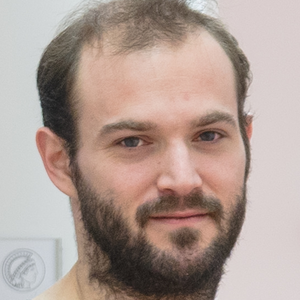Deep Graph Matching via Blackbox Differentiation of Combinatorial Solvers
Building on recent progress at the intersection of combinatorial optimization and deep learning, we propose an end-to-end trainable architecture for deep graph matching that contains unmodified combinatorial solvers. Using the presence of heavily optimized combinatorial solvers together with some improvements in architecture design, we advance state-of-the-art on deep graph matching benchmarks for keypoint correspondence. In addition, we highlight the conceptual advantages of incorporating solvers into deep learning architectures, such as the possibility of post-processing with a strong multi-graph matching solver or the indifference to changes in the training setting. Finally, we propose two new challenging experimental setups.
| Author(s): | Michal Rolínek and Paul Swoboda and Dominik Zietlow and Anselm Paulus and Vít Musil and Georg Martius |
| Book Title: | Computer Vision – ECCV 2020 |
| Volume: | 28 |
| Pages: | 407--424 |
| Year: | 2020 |
| Month: | August |
| Series: | Lecture Notes in Computer Science, 12373 |
| Editors: | Vedaldi, Andrea and Bischof, Horst and Brox, Thomas and Frahm, Jan-Michael |
| Publisher: | Springer |
| Project(s): | |
| Bibtex Type: | Conference Paper (inproceedings) |
| Address: | Cham |
| DOI: | 10.1007/978-3-030-58604-1_25 |
| Event Name: | 16th European Conference on Computer Vision (ECCV 2020) |
| Event Place: | Glasgow, UK |
| State: | Published |
| Electronic Archiving: | grant_archive |
| ISBN: | 978-3-030-58603-4 |
| Links: | |
BibTex
@inproceedings{rolinek2020:deepgraphmatching,
title = {Deep Graph Matching via Blackbox Differentiation of Combinatorial Solvers},
booktitle = {Computer Vision – ECCV 2020},
abstract = {Building on recent progress at the intersection of combinatorial optimization and deep learning, we propose an end-to-end trainable architecture for deep graph matching that contains unmodified combinatorial solvers. Using the presence of heavily optimized combinatorial solvers together with some improvements in architecture design, we advance state-of-the-art on deep graph matching benchmarks for keypoint correspondence. In addition, we highlight the conceptual advantages of incorporating solvers into deep learning architectures, such as the possibility of post-processing with a strong multi-graph matching solver or the indifference to changes in the training setting. Finally, we propose two new challenging experimental setups.},
volume = {28},
pages = {407--424},
series = {Lecture Notes in Computer Science, 12373},
editors = {Vedaldi, Andrea and Bischof, Horst and Brox, Thomas and Frahm, Jan-Michael},
publisher = {Springer},
address = {Cham},
month = aug,
year = {2020},
slug = {rolinek2020-deepgraphmatching},
author = {Rolínek, Michal and Swoboda, Paul and Zietlow, Dominik and Paulus, Anselm and Musil, Vít and Martius, Georg},
month_numeric = {8}
}



